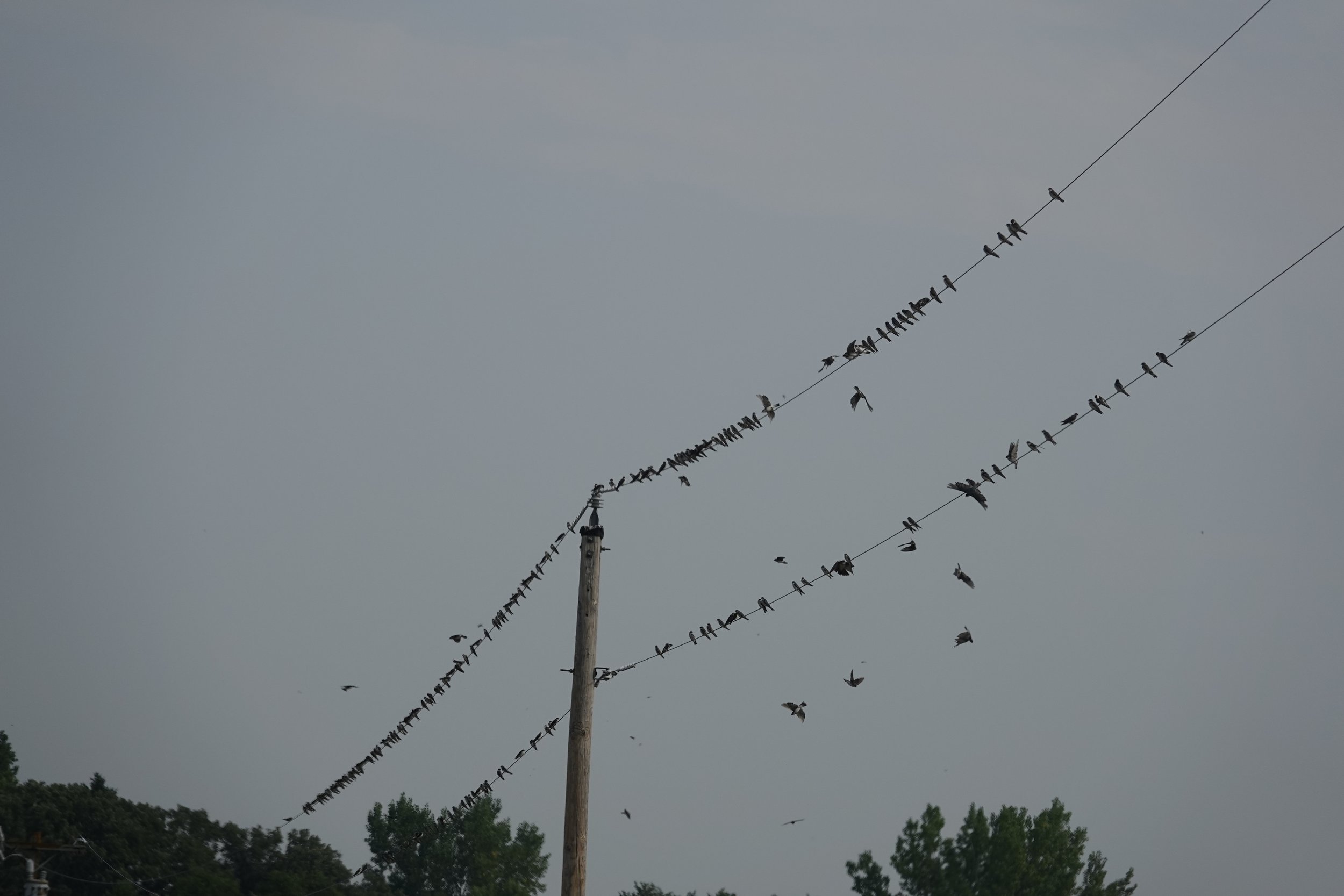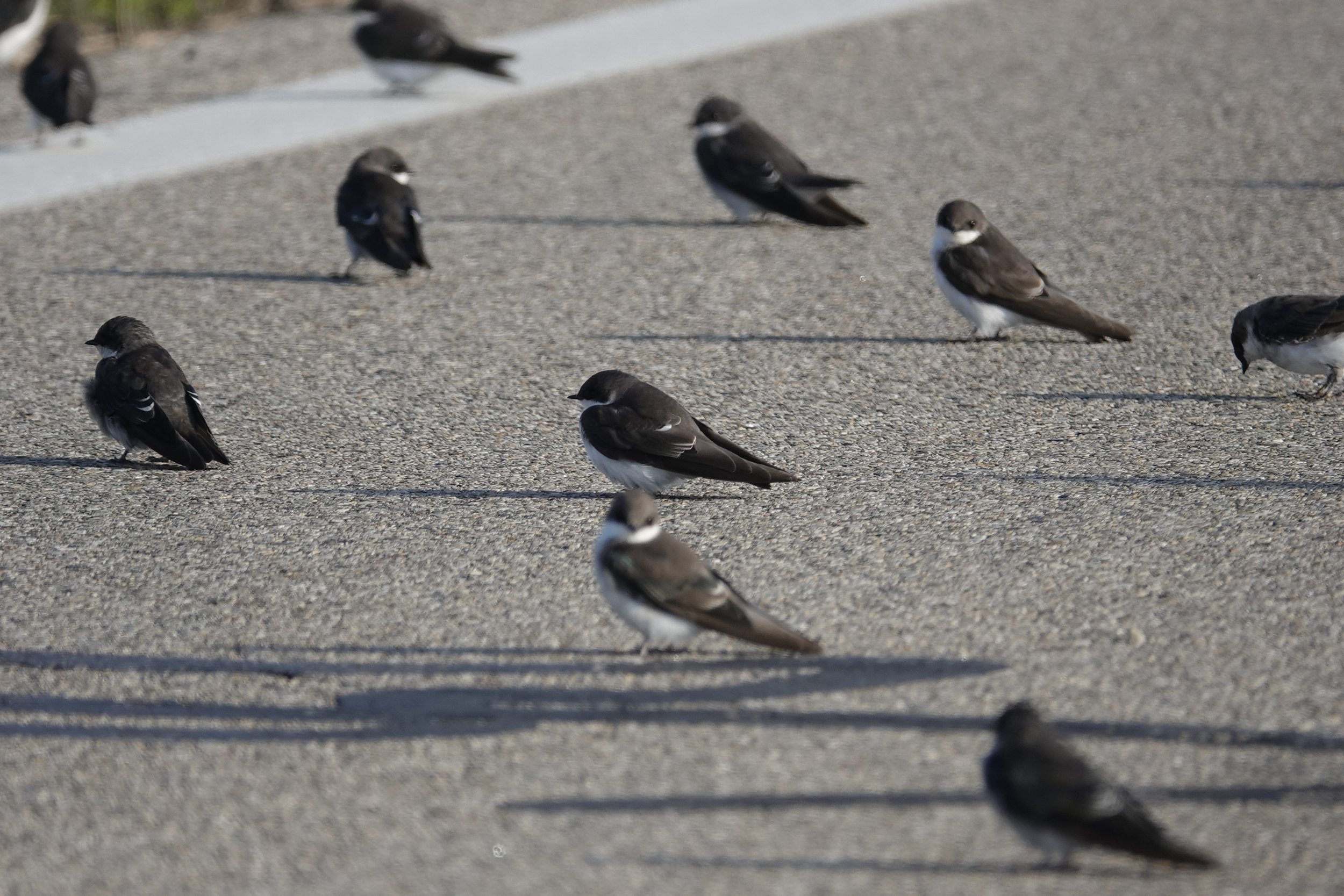Naturally
My wife had left to volunteer at the food shelf. I had a Zoom meeting of a board I serve on in Alaska (I’m the token Minnesotan) and then I was going to a local in-person Audubon meeting. She sent me a text alerting me to a hummingbird trying to get into the garage. A hummingbird had gone in and out of the garage before she could get the door closed. Why did the tiny bird want in the garage? Was it hoping to find a 2010 Hummer parked there? No, it was attracted by the dangling red handle on the garage door pull, which if you have a good imagination and a hummingbird does, resembles a hummingbird feeder. Once inside a garage, the hummingbird flew up because hummingbirds don’t understand a roof. How do you evict a hummingbird from a garage? Open the garage door so it can fly out on its own. If it’s slow in leaving, place a hummingbird feeder or a red object near the open garage door to lure it outside.
I didn’t see many toadlets in my yard this year. The tiny toads eat small insects. A toad has parotoid glands producing a poisonous secretion that helps the toad defend itself against predators. All toads are frogs, but not all frogs are toads.
I came across a spiderweb holding a few raindrops. It was so beautiful, it could have been a construct of a highly skilled jeweler. I was birding at a state park. There were waves of warblers and some were waving goodbye—mostly American redstarts with a pleasant mix of other species. Patient green herons opened offices for foraging. Deer walked through the sucking mud, leaving the ungulates black-legged on shore after quenching their thirst. The drought caused turkeys and squirrels to make the same long muddy walk to drinking water. A great flock of great egrets and a leucistic eastern kingbird glowed in the leafy green foliage. I savored every moment. As I drove home at dusk, I was presented with a lovely sky of common nighthawks. Their bat-like flight earned the bird the nickname "bullbat." I saw a couple of bats hunting the twilight with the nighthawks. The tiny bills of the nighthawks become commodious mouths when consuming flying insects on the wing at 12-35 mph. Primary insect prey varies with availability—ants, beetles, moths, true bugs and caddisflies.
Roadside pheasant survey
The numbers in Minnesota DNR’s annual roadside pheasant survey increased 101% in the southwest region and 38% in the west central. Other areas saw decreases, with numbers dropping 39% central, 63% east central, 11% south central and 50% in the southeast regions. Pheasants averaged a 10% increase statewide over 2022 and 26% above the 10-year average. This year’s statewide pheasant index was 53 birds per 100 miles of roads driven, compared to 48 in 2022. Weather and habitat are the major influences on pheasant populations. Weather causes annual fluctuations and habitat drives long-term population trends. Populations benefited from favorable weather in the southwest and west central. An area’s increase in pheasant numbers doesn’t continue without a corresponding increase in habitat.
Q&A
“Why are there turkeys along the roadside?” They aren’t hitchhiking. They have no thumbs. Roadsides become courtship areas in late winter and flocking areas before spring breakup. Juvenile and adult hens use roads in early spring because green forage, seeds and insects are more abundant in open, sunny habitats. Roads can be a source of food or a crossing point.
“Do we have hornets in Minnesota?” All our hornets are wasps, but not all wasps are hornets. The bald-faced hornet is a wasp. All species of “true hornets” (genus Vespa) are endemic to Eurasia and northern Africa; none are native to North America. The northern giant hornet was formerly named the Asian giant hornet and nicknamed a murder hornet.
Glenda Batt of Albert Lea asked when hummingbirds leave Minnesota. They migrate south as early as mid-August, with most leaving the state by the end of September—although stragglers are found well into October.
A River Falls reader asked why hummingbirds dance. It could be a courting or territorial display, or hunting flying insects which can look like dancing.
Ken Nelson of Clarks Grove asked when barn swallows and house wrens leave? Barn swallows gather in migratory groups in July with a peak migration in August. They winter in Central and South America. House wrens become secretive and silent after nesting (two broods). The secondary cavity nesters leave in September for southern US or Mexico.
Thanks for stopping by
“In nature, nothing is perfect and everything is perfect. Trees can be contorted, bent in weird ways, and they’re still beautiful.”—Alice Walker.
“When you do something noble and beautiful and nobody noticed, do not be sad. For the sun every morning is a beautiful spectacle and yet most of the audience still sleeps.”—John Lennon.
Do good.
©️Al Batt 2023
A tall white bird with a yellow bill, black legs and long S-curved neck has made the great egret a chiropractor’s dream. At the beginning of the 20th century, it neared extinction due to market hunting. The egrets’ feather plumes were used to adorn women's hats. The great egret has been called the American egret, common egret and great white egret. Photo by Al Batt.
A condensation of swallows.
A disagreement at the old swimming hole.





